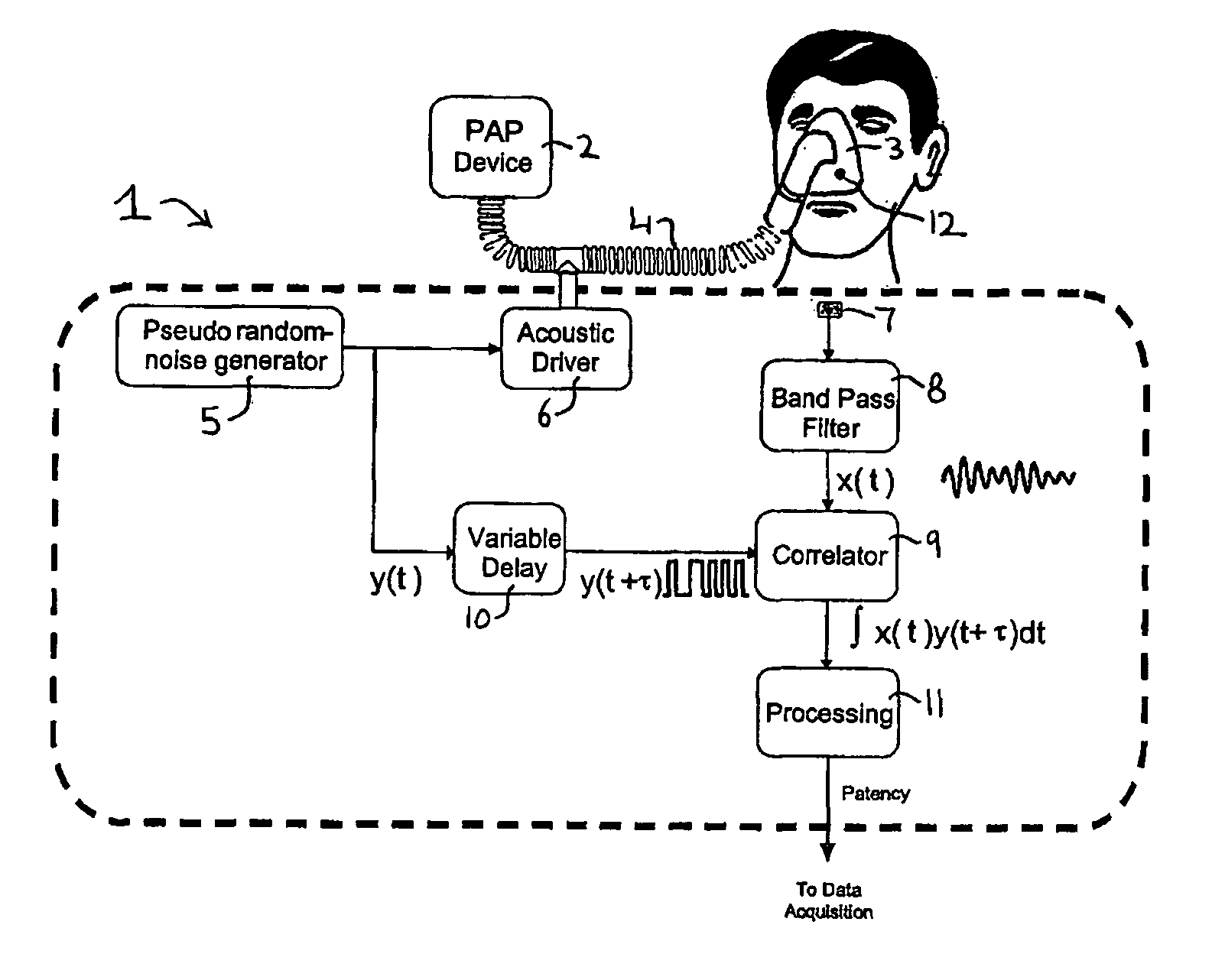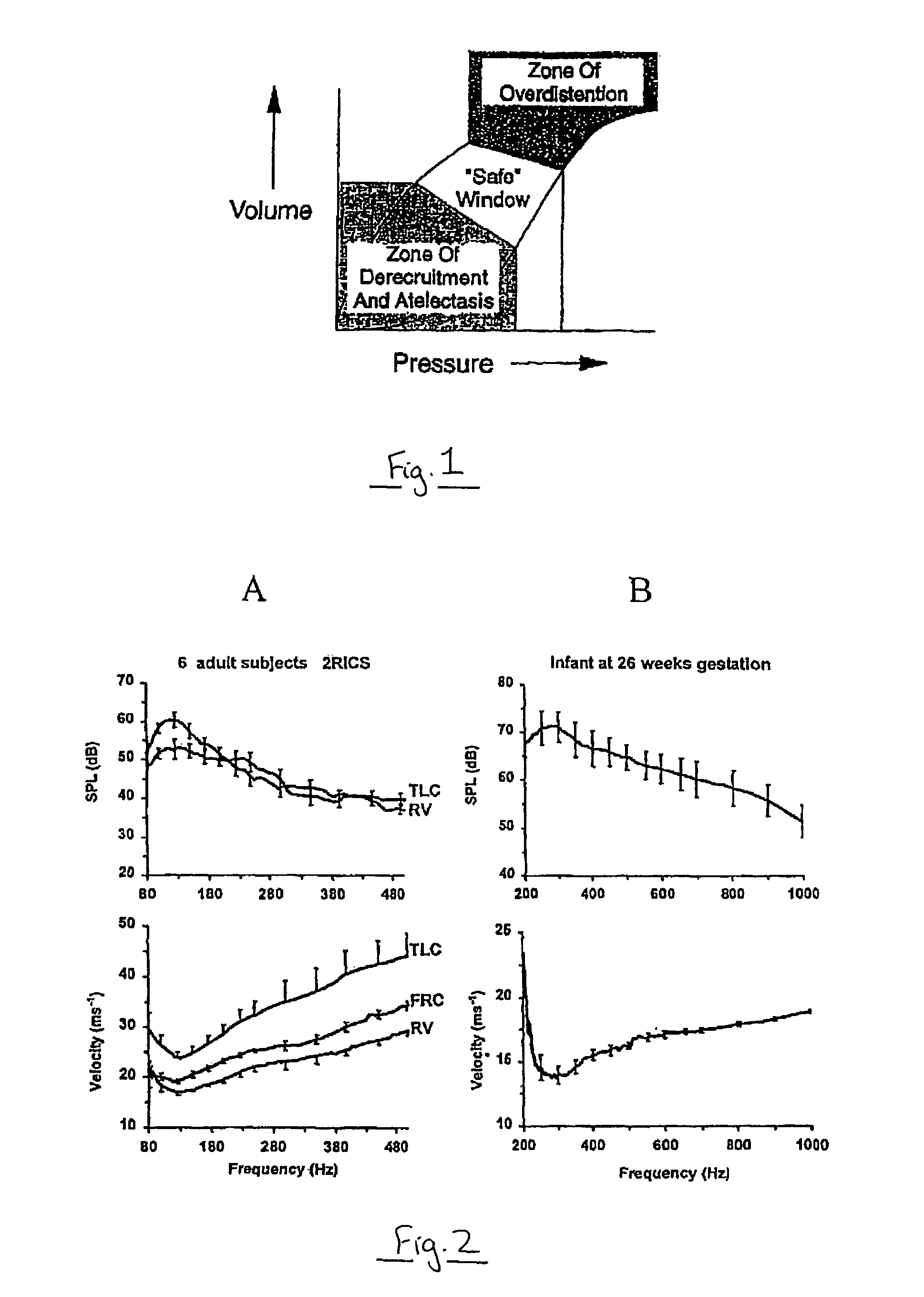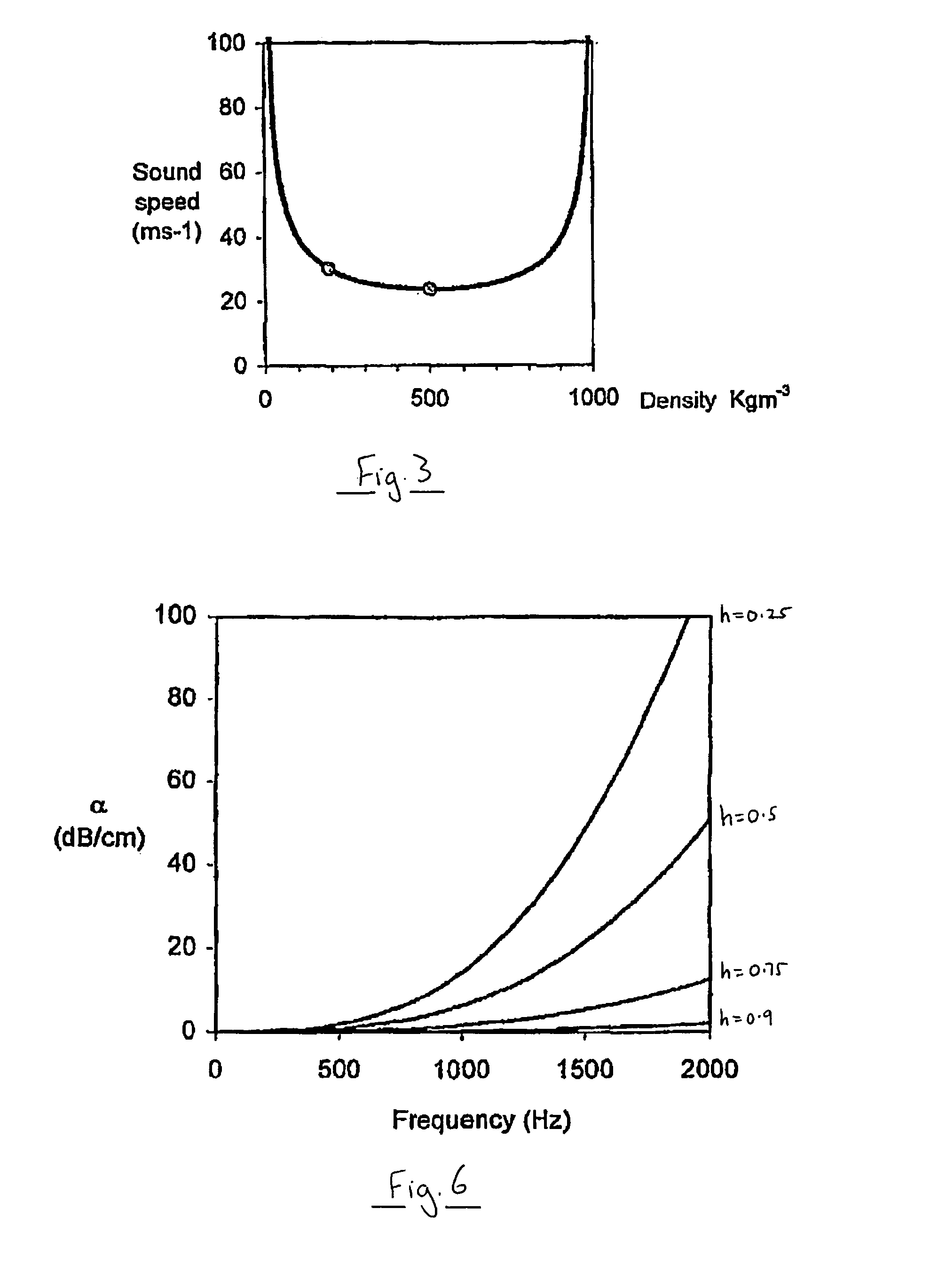Method and apparatus for determining conditions of biological tissues
a biological tissue and condition technology, applied in the field of biological tissue condition determination methods and apparatuses, can solve the problems of requiring bulky equipment and expensive installation, affecting the accuracy of titration, so as to facilitate home diagnosis and home titration, and facilitate auto-titration of positive pressure
- Summary
- Abstract
- Description
- Claims
- Application Information
AI Technical Summary
Benefits of technology
Problems solved by technology
Method used
Image
Examples
example 1
Measurement of Lung Volume in Adults
[0247]In 5 healthy adult subjects, the velocity and attenuation of sound which was transmitted from one side of the chest to another, in a range of frequencies from 50-1000 Hz was measured at a number of defined positions on the chest. These measurements were taken while the lung volume was varied between Residual Volume (RV) and Total Lung Capacity (TLC). A reference position was established over the right upper zone of the chest. Using this position, a region in the frequency spectrum (around 100-125 Hz) where sound attenuation was much reduced and where the degree of attenuation was directly related to lung inflation (see FIG. 2A, upper panel) was found. The difference in attenuation between RV and TLC was approximately 7.5 dB and statistically significant (P=0.028). Further, it was found that sound velocity was low, averaging around 30 m / sec, and it showed a clear and strong sensitivity to the degree of lung inflation, being appreciably faster...
example 2
Measurement of Lung Density in Rabbits
[0250]Experiments were conducted in 1-2 kg New Zealand white rabbits. These animals were chosen for their similarity in size to the human newborn and their widespread use as a model of neonatal surfactant deficiency. Animals were anaesthetised with intravenous thiopentone, before performing a tracheostomy during which a 3 mm endotracheal tube was inserted into the airway to allow ventilation using a conventional neonatal ventilator (Bournes BP200). Maintenance anaesthesia was achieved with intravenous fentanyl. The chest was shaved and a microphone and transducer secured in various pre-defined positions, including a reference position over the right upper chest. The animal was then placed in a whole body plethysmograph to monitor absolute lung gas volume at intervals throughout the experiment. Tidal volume was monitored continuously with a pneumotachograph attached to the tracheostomy tube. The sound velocity and attenuation was determined at ea...
example 3
Measurement of Lung Inflation in Infants
[0259]To be a valuable clinical tool, measurements of sound velocity and attenuation must be sensitive to changes in lung inflation that are of a clinically relevant magnitude. A test of whether measurable changes in sound velocity and attenuation which occurred after clinical interventions which were confidently predicted alter the degree of lung inflation was conducted. It was found that clinical interventions which cause a significant change in lung inflation are associated with changes in sound transmission and velocity which are measurable using the present invention.
PUM
 Login to View More
Login to View More Abstract
Description
Claims
Application Information
 Login to View More
Login to View More - R&D
- Intellectual Property
- Life Sciences
- Materials
- Tech Scout
- Unparalleled Data Quality
- Higher Quality Content
- 60% Fewer Hallucinations
Browse by: Latest US Patents, China's latest patents, Technical Efficacy Thesaurus, Application Domain, Technology Topic, Popular Technical Reports.
© 2025 PatSnap. All rights reserved.Legal|Privacy policy|Modern Slavery Act Transparency Statement|Sitemap|About US| Contact US: help@patsnap.com



